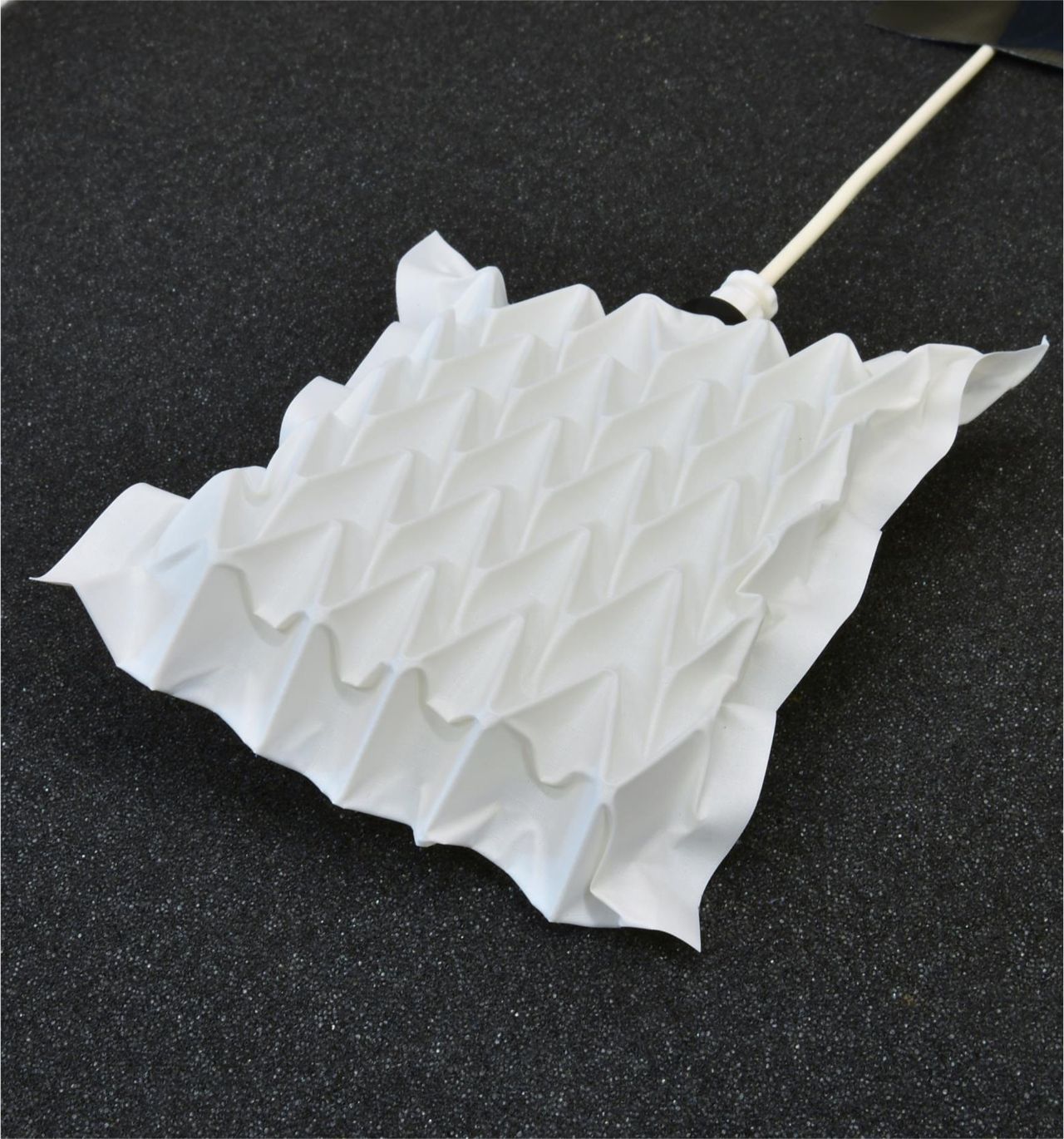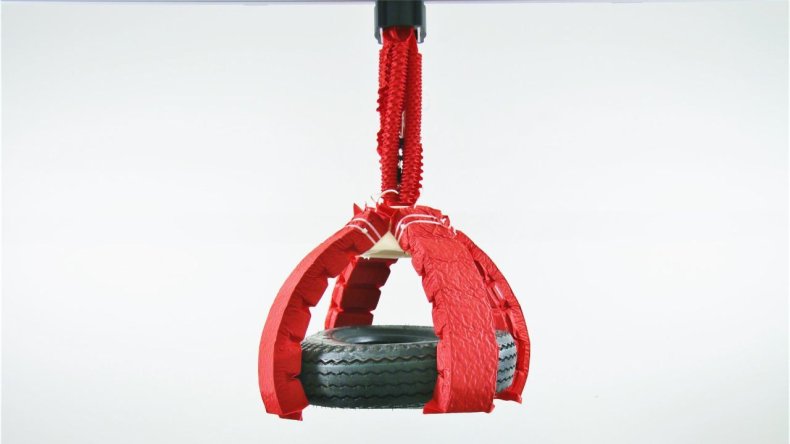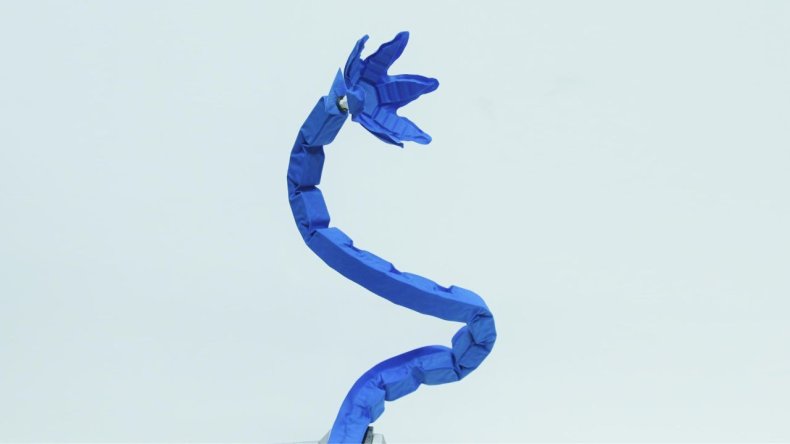How to Make a Strong Continuous Robotic Lift
Superpower Origami Robot Muscles That Can Lift 1,000 times Their Own Weight Offer 'limitless' Potential

Researchers have used origami to create flexible robotic muscles strong enough to lift up to 1,000 times their own weight. Subtle as well as strong, they could be used to deliver medicine, create exoskeletons and even explore space.
One of the biggest problems with robotics is getting them to move in a natural, flexible way. To avoid the jerky movements of most robots, engineers usually have to compromise on strength. The scientists, from Harvard University and the Massachusetts Institute of Technology, however, have created flexible "muscles" six times as strong as mammalian muscle.
A 2.6g muscle built by the team was able to lift a 6.6 pound object—the equivalent of a mallard lifting a car. Their findings are published in the Proceedings of the National Academy of Sciences.
"Artificial muscle-like actuators are one of the most important grand challenges in all of engineering," Robert J Wood, Professor of Engineering and Applied Sciences at Harvard, said in a statement. "Now that we have created actuators with properties similar to natural muscle, we can imagine building almost any robot for almost any task."
Each muscle costs less than $1 to make
The new origami-style muscles, or "actuators," can lift objects up to 1,000 times their own weight and cost less than $1 to make. Each muscle's folded inner skeleton sits inside a plastic or textile bag filled with air or water. A vacuum sucks the bag tight around the origami skeleton—which can be made from materials like plastic and metal. This change of pressure moves the skeleton according to its shape, allowing it to grip, twist and lift.

"In addition to their muscle-like properties, these soft actuators are highly scalable," Wood said. "We have built them at sizes ranging from a few millimeters up to a meter, and their performance holds up across the board."
The "superpower" muscles offer "limitless" potential, according to senior author Daniela Rus, Professor of Electrical Engineering and Computer Science at MIT. The shape and movement of the paper is determined by the internal skeleton, so could theoretically take any form. The team speculate that the technology could be used to make large space exploration structures, wearable exoskeletons and even devices to deliver medicine inside the body.

"When creating robots, one always has to ask, 'Where is the intelligence—is it in the body, or in the brain?'" said Rus. "Incorporating intelligence into the body (via specific folding patterns, in the case of our actuators) has the potential to simplify the algorithms needed to direct the robot to achieve its goal. All these actuators have the same simple on/off switch, which their bodies then translate into a broad range of motions."
Human-like robots have an incredible number of potential applications. Last month, researchers from UCLA and the University of Washington developed artificial skin that can sense vibration. This skin could be used, the scientists speculated, to create robots which can open doors, play instruments, and even dispose of bombs.
As for the future of origami muscles, Rus is looking to the animal kingdom for inspiration. "The very next thing I would like to build with these muscles is an elephant robot with a trunk that can manipulate the world in ways that are as flexible and powerful as you see in real elephants," she said.
Source: https://www.newsweek.com/superpower-origami-robot-muscles-created-scientists-724177
0 Response to "How to Make a Strong Continuous Robotic Lift"
Post a Comment